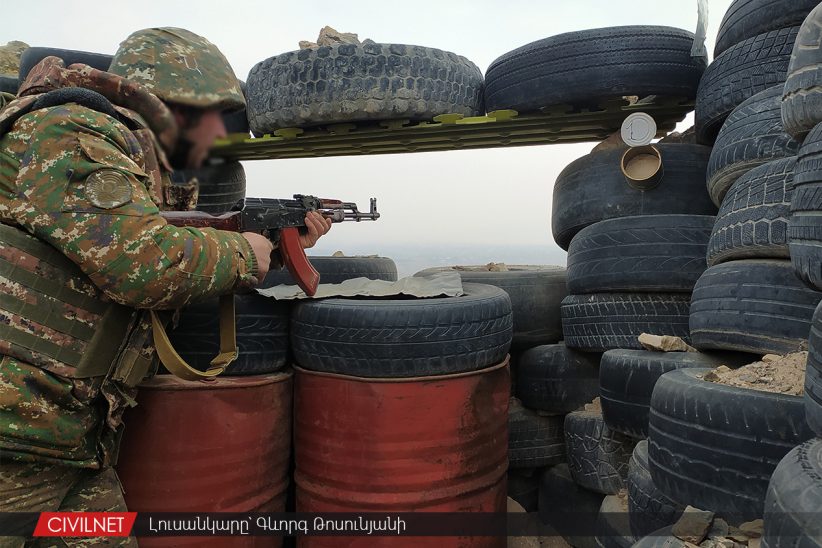By Mark Dovich
Armenia’s and Azerbaijan’s Defense Ministries again traded accusations of ceasefire violations Saturday, with each side blaming the other for initiating shoot-outs Friday evening along the two countries’ border, marking the fourth straight day that one or both sides made such allegations.
“On September 23 at around 7:30 p.m., a unit of the Azerbaijani armed forces resorted to provocations, attempting to infiltrate the rear of an Armenian combat position located in the eastern direction of the Armenian-Azerbaijani border zone,” Armenia’s Defense Ministry said Saturday.
“Thanks to the skillful actions of the units of the Armenian armed forces, the enemy was pushed back to its starting positions. There are no losses on the Armenian side. No other incidents were reported during the night. As of 10:00 a.m. on September 24, the situation is relatively stable,” the ministry said.
Meanwhile, Azerbaijan’s Defense Ministry said that, “On September 23 from 7:30 p.m. to 11:40 p.m., units of the Armenian forces from positions” in Gegharkunik and Vayots Dzor “periodically subjected to fire the Azerbaijani army’s positions” in Kalbajar.
“The Azerbaijani army’s units stationed in these directions took adequate retaliatory measures,” the ministry said, adding that three Azerbaijani soldiers received non-life threatening injuries in the shoot-out.
Armenia’s Defense Ministry reported other ceasefire violations by Azerbaijan Tuesday evening, Wednesday evening, and Friday morning. A ministry spokesperson said one Armenian soldier received non-life threatening injuries in Wednesday’s alleged clash.
Azerbaijan’s Defense Ministry reported one other ceasefire violation by Armenia that began Thursday evening and stretched into Friday morning.
Each side has denied the other’s ceasefire violation claims.
These are the first accusations of breaking the fragile ceasefire that came into effect last Wednesday to end two days of fierce fighting in parts of eastern and southern Armenia.
Azerbaijan launched large-scale attacks on Armenia proper last Tuesday, shelling three dozen municipalities, including major population centers, marking an unprecedented escalation in hostilities.
Two days of heavy clashes left nearly 300 people killed or missing and almost 600 people injured, including civilians, according to official figures from both sides. The combined losses make last week the bloodiest in the region, by far, since the outbreak of the war in and around Karabakh (Artsakh) nearly two years ago․
Armenian Prime Minister Nikol Pashinyan warned that “the risk of new aggression by Azerbaijan remains very high” in a major address Thursday at this year’s United Nations General Assembly in New York City.
Pashinyan held a number of meetings with senior officials on the sidelines of the general assembly, including U.S. Secretary of State Antony Blinken, UN Secretary General Antonio Guterres, European Council President Charles Michel, and NATO Secretary General Jens Stoltenberg.
Blinken wrote on Twitter Saturday that “we continue to urge the parties (Armenia and Azerbaijan) to engage in the peace process,” while the U.S. embassy in Yerevan said in a press statement the day before that, “We call on Azerbaijan to withdraw its armed forces to their original positions.”
Last weekend, House Speaker Nancy Pelosi became the highest-ranking U.S. official ever to visit Armenia, meeting with Pashinyan and a number of other senior officials.
At a press conference in Yerevan, Pelosi said that “we strongly condemn” the “illegal and deadly attacks by Azerbaijan on Armenian territory,” adding that, “We, our delegation, have been very outspoken in saying that this was initiated by the Azeris and that there has to be recognition of that.”
The United States played a key role in brokering last week’s ceasefire, senior Armenian officials have suggested.
















